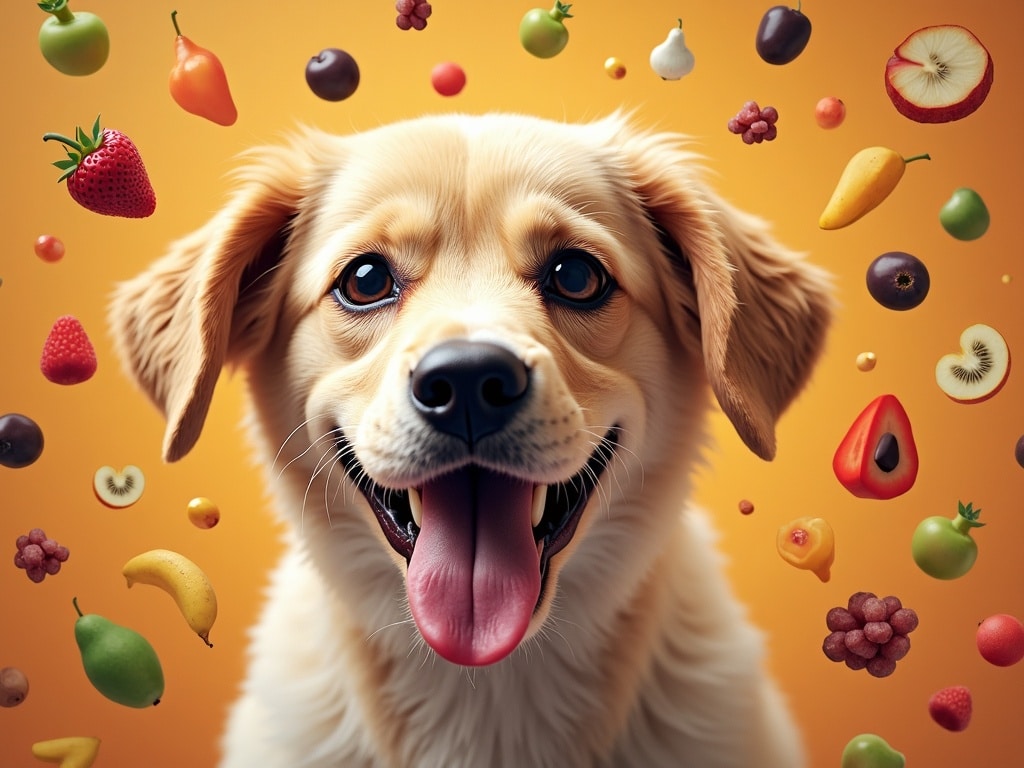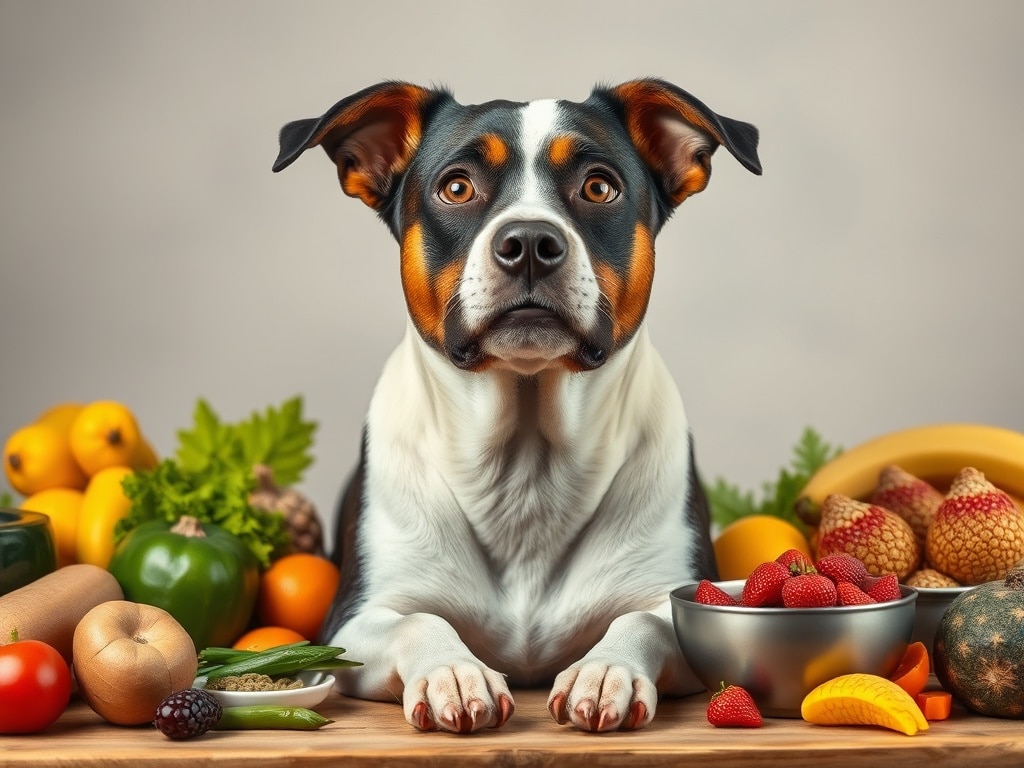Beyond Chocolate: Surprising Foods That Are Deadly to Dogs
We all know that chocolate is a no-go for dogs. But what about other common household foods? Many dog owners are shocked to learn that seemingly harmless snacks can pose a significant threat to their furry friends. From fruits and vegetables to everyday sweeteners, this guide will uncover the surprising foods that are toxic to dogs, shedding light on the dangers lurking in your kitchen and garden.
Why Are Some Foods Toxic to Dogs?
Dogs' bodies process foods differently than humans. Their digestive systems lack specific enzymes needed to break down certain compounds, making them susceptible to toxins that humans can easily handle. Additionally, a dog's smaller size means that even small amounts of a toxic substance can have a more concentrated and severe effect.
Understanding the Canine Digestive System
Unlike humans, dogs have shorter digestive tracts, which means food passes through their systems more quickly. This rapid transit time reduces their ability to ferment plant matter, limiting the absorption of nutrients from certain vegetables and fruits. Additionally, dogs produce fewer carbohydrate-digesting enzymes in their saliva, making it harder for them to process sugary and starchy foods. This difference in digestive capabilities is why some foods are safe for humans but can cause serious health issues in dogs.
Grapes and Raisins: The Mysterious Threat
Grapes and raisins are a notorious danger to dogs, but the exact toxic substance remains a mystery. Even small amounts can cause kidney failure in some dogs. Symptoms can appear within 24 hours and include vomiting, lethargy, and decreased appetite. If your dog ingests grapes or raisins, immediate veterinary attention is crucial.
Onions, Garlic, and Chives: Damaging Red Blood Cells
These alliums contain compounds that can damage a dog's red blood cells, leading to anemia. This is because they contain N-propyl disulfide, a compound that can cause these cells to break down. Whether cooked, raw, or powdered, onions, garlic, and chives should be avoided. Symptoms of toxicity include weakness, pale gums, and discolored urine.
"Unlock the Secrets to a Blissful, Healthier Puppy: Discover the Benefits of Holistic Housebreaking"
Xylitol: The Artificial Sweetener Hazard
Xylitol, a common artificial sweetener found in sugar-free gums, candies, and even some peanut butters, is extremely toxic to dogs. It causes a rapid release of insulin resulting in a dangerous drop in blood sugar (hypoglycemia), which can lead to seizures, liver failure, and even death. Always check the ingredient list before giving your dog any human treats.
Alcohol: Intoxication and Organ Damage
Alcohol has the same effect on a dog's system as it does on a human's, but it takes far less to cause significant damage. Even small amounts of alcohol can cause intoxication, leading to vomiting, incoordination, difficulty breathing, coma, and even death. Dogs are much more susceptible to alcohol poisoning than humans, so it's essential to keep alcoholic beverages and products containing alcohol out of their reach.
Cleaner bowls today, fewer vet visits tomorrow
Caffeine: Overstimulation of the Nervous System
Caffeine, found in coffee, tea, soda, and energy drinks, acts as a stimulant and can have serious effects on a dog's nervous system and heart. Caffeine toxicity can cause restlessness, hyperactivity, increased heart rate, tremors, seizures, and even collapse. Due to their smaller size and sensitivity, even small amounts of caffeine can be life-threatening for dogs.
Avocado: The Persin Problem
Avocado contains persin, a fungicidal toxin that can cause vomiting and diarrhea in dogs. While not as toxic as some other foods, it's best to avoid giving avocado to your dog, particularly the pit, which can be a choking hazard and cause intestinal obstruction. The leaves and bark of avocado trees are also toxic to dogs.
Macadamia Nuts: Neurological Symptoms
Macadamia nuts can cause a range of neurological symptoms in dogs, including weakness, tremors, and hyperthermia (increased body temperature). Although the exact toxic mechanism is unknown, symptoms usually appear within 12 hours of ingestion and can last up to 48 hours. While generally not fatal, macadamia nut toxicity can be very uncomfortable for your dog.
Raw Dough: The Expanding Threat
Raw dough containing yeast is dangerous for dogs because the yeast produces alcohol as it ferments, leading to alcohol poisoning. Additionally, the dough can expand in the warm, moist environment of the stomach, causing bloating and severe discomfort, and potentially leading to gastric dilatation-volvulus (GDV), a life-threatening condition. Always keep unbaked dough well out of your dog's reach.
Fruit Pits and Seeds: Cyanide Poisoning
The pits and seeds of certain fruits, such as apples, cherries, peaches, plums, and apricots, contain cyanide, a highly toxic substance. While the fruit flesh itself is generally safe, the pits and seeds should be avoided. If your dog chews and swallows these pits or seeds, it can lead to cyanide poisoning, causing symptoms like difficulty breathing, dilated pupils, and seizures.
No artificial stuff—just nutrients dogs actually need
Moldy Foods: The Deadly Mycotoxins
Moldy foods can contain mycotoxins, toxic substances produced by molds that can be deadly to dogs. Ingesting moldy food can lead to vomiting, diarrhea, tremors, seizures, and liver damage. Always discard moldy food properly, ensuring your dog cannot access it. Even small amounts of mycotoxins can be fatal.
Recognizing the Signs and Symptoms of Food Poisoning in Dogs
Knowing the signs of food poisoning can help you react quickly and potentially save your dog's life. Common symptoms include:
- Vomiting and diarrhea
- Lethargy or weakness
- Loss of appetite
- Abdominal pain or tenderness
- Tremors or seizures
- Excessive drooling
- Difficulty breathing
If you notice any of these symptoms, especially after your dog has potentially ingested a toxic food, seek immediate veterinary care.
What to Do If Your Dog Eats a Toxic Food
If you suspect your dog has ingested a toxic food, act quickly. Here are the steps you should take:
- Remove the remaining food: Prevent your dog from eating any more of the toxic substance.
- Identify the ingested substance: Knowing what your dog ate will help the vet determine the best course of action.
- Contact your veterinarian or an animal poison control center immediately: Do not wait for symptoms to appear. Time is of the essence.
- Follow veterinary advice: Your vet may advise you to induce vomiting at home, but only do so under their guidance.
- Take your dog to the vet: Even if your dog seems fine, it's crucial to have them examined by a veterinarian to monitor for any delayed effects.
Preventing Your Dog from Eating Dangerous Foods
Prevention is the best medicine. Take these steps to protect your dog from accidental poisoning:
- Store food properly: Keep all foods, especially toxic ones, in secure containers and out of your dog's reach.
- Be mindful of where you leave food: Don't leave food unattended on counters or tables where your dog can access it.
- Educate your family and visitors: Make sure everyone in your household knows which foods are toxic to dogs.
- Secure trash cans: Use trash cans with tight-fitting lids to prevent your dog from scavenging.
- Supervise your dog: Watch your dog closely when they are in the kitchen or garden, especially when food is present.
Safe Human Foods You Can Share with Your Dog (in Moderation)
While many foods are off-limits, some human foods are safe and even beneficial for dogs when given in moderation. These include:
- Cooked lean meats (chicken, turkey, beef)
- Certain cooked vegetables (carrots, green beans, sweet potatoes)
- Plain yogurt (unsweetened and xylitol-free)
- Cooked oatmeal
- Rice
Always introduce new foods gradually and consult with your veterinarian to ensure they are appropriate for your dog's specific needs and health condition. See also, The Best Healthy Food for Dogs to Eat: A Vet's Guide.
Common Myths About Dog-Safe Foods
It's easy to get confused by conflicting information. Here are a few common myths about dog-safe foods:
- Myth: A little bit won't hurt. Even small amounts of toxic foods can be dangerous for some dogs.
- Myth: My dog has eaten it before and was fine. Toxicity can vary depending on the dog and the amount ingested.
- Myth: If it's organic, it's safe. Organic doesn't mean non-toxic. Many organic foods can still be harmful to dogs.
Always err on the side of caution and do your research or consult with a veterinarian before giving your dog any new food.
Conclusion: Protecting Your Furry Friend
Knowing which foods are toxic to dogs is crucial for keeping your beloved companion safe and healthy. By being vigilant about what your dog eats and taking preventive measures, you can avoid accidental poisoning and ensure a long, happy life for your furry friend. For more great articles, view The Best Healthy Food for Dogs to Eat: A Vet's Guide.


